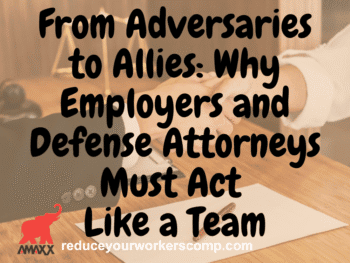How Would You Decide: The Biscotti Incident Here's what Tom Robinson, J.D., writer for Lexis Nexis Workers Comp Law Center reports. Immigrant's Tort Claim for Intentional Injury Filed Against New Jersey Cookie Maker Is Barred by Exclusive Remedy Provisions of the State's Compensation Act Here's What Happened A New Jersey worker, a Vietnamese immigrant who could not speak, read, or understand English, sustained significant injuries when her hand came into contact with a sharp blade inside a biscotti machine at the employer's baking facility. To prevent a hand from entering the area in which the blade operated, the back of the machine had a ten-inch wide sheet metal guard located about one-and-one-half inches above the area where workers removed the biscotti pieces for further processing. The guard itself was about nine inches from the location of the sharp blade inside the machine. The worker was injured on her first day working at the machine. She filed a tort action against the employer, contending her employer's inadequate training and faulty safeguards amounted to an intentional tort, and her civil action was not, therefore, barred by the exclusive remedy provisions of the state's workers' compensation law. There was some question as to whether warnings on the machine, printed in English, were actually present on the machine at the time the worker was injured. According to the worker's expert, even if the warning labels were present on the day of the accident, they would not have provided any meaningful information to an individual who could not speak or read English. The expert also observed the metal guard could not prevent a person from inserting his or her hand into the area containing the blade. The expert opined this danger presented such a high risk "it was not only reasonably foreseeable but substantially certain somebody would have been seriously injured by this machine without appropriate training." [Author's note: New Jersey is among the states utilizing the "substantially certain" rule- in order to avoid the exclusivity defense the injured employee must allege sufficient facts to demonstrate his or her employer knew its actions were "substantially certain to result in injury or death to the employee." New Jersey's "substantially certain" rule is more restrictive, however, than most of the other states utilizing it. Under a doctrine laid out in Laidlow v. Hariton Mach. Co., Inc., 170 N.J. 602, 605, 790 A.2d 884 (2002), a second prong is added. The employee must also show, "the resulting injury and the circumstances of its infliction on the worker" constituted "more than a fact of life of industrial employment" and were "plainly beyond anything the Legislature intended the Workers' Compensation Act to immunize."] The trial court dismissed the worker's complaint against her employer, finding in relevant part the plaintiff did not present sufficient evidence to overcome the intentional wrong exception to the workers' compensation exclusivity bar. Here's How the Court Ruled In Cong Su v. David's Cookies, 2009 N.J. Super. Unpub. LEXIS 2145 (August 10, 2009), the Superior Court of New Jersey (Appellate Division) agreed with the trial court and affirmed. The appellate court observed there was no evidence anyone had ever been injured by the machine prior to the worker's accident, there had been no employee complaints regarding the machine or any safety aspects associated with it, and the defendant employer had never received any citation from the Occupational Safety and Health Administration (OSHA) regarding the machine. Concerning the failure to train allegations, the appellate court agreed with the trial court that an employer could assume a rational person would not stick his or her hand in a machine being operated by electric power without turning it off or seeking assistance from others. The trial judge also found the allegations of failure to train, failure to supervise, failure to warn, as well as the type of injury sustained by the worker clearly fell within the workplace hazards intended to be covered by the Worker's Compensation Act. The trial judge had been satisfied this was a typical workplace accident that did not differ in any significant way from the types of industrial accidents the Legislature intended to compensate exclusively through the provisions of the workers' compensation law. The appellate court agreed and indicated under such circumstances no tort action could be maintained against the employer. The worker's sole remedy was within the workers' compensation system. (workersxzcompxzkit) See generally Larson's Workers' Compensation Law, § 103.04. Tom Robinson, J.D. is the primary upkeep writer for Larson's Workers' Compensation Law (LexisNexis) and Larson's Workers' Compensation, Desk Edition (LexisNexis). He is a contributing writer for California Compensation Cases (LexisNexis) and Benefits Review Board – Longshore Reporter(LexisNexis), and is a contributing author to New York Workers' Compensation Handbook(LexisNexis). Robinson is an authority in the area of workers' compensation and we are happy to have him as a Guest Contributor to Workers' Comp Kit Blog. Tom can be reached at: compwriter@gmail.com. http://law.lexisnexis.com/practiceareas/Workers-Compensation
WC Calculator: www.reduceyourworkerscomp.com/calculator.php WC 101: www.ReduceYourWorkersComp.com/workers_comp.php Do not use this information without independent verification. All state laws vary.
©2008 Amaxx Risk Solutions, Inc. All rights reserved under International Copyright Law. If you would like permission to reprint this material, contact Info@WorkersCompKit.com















